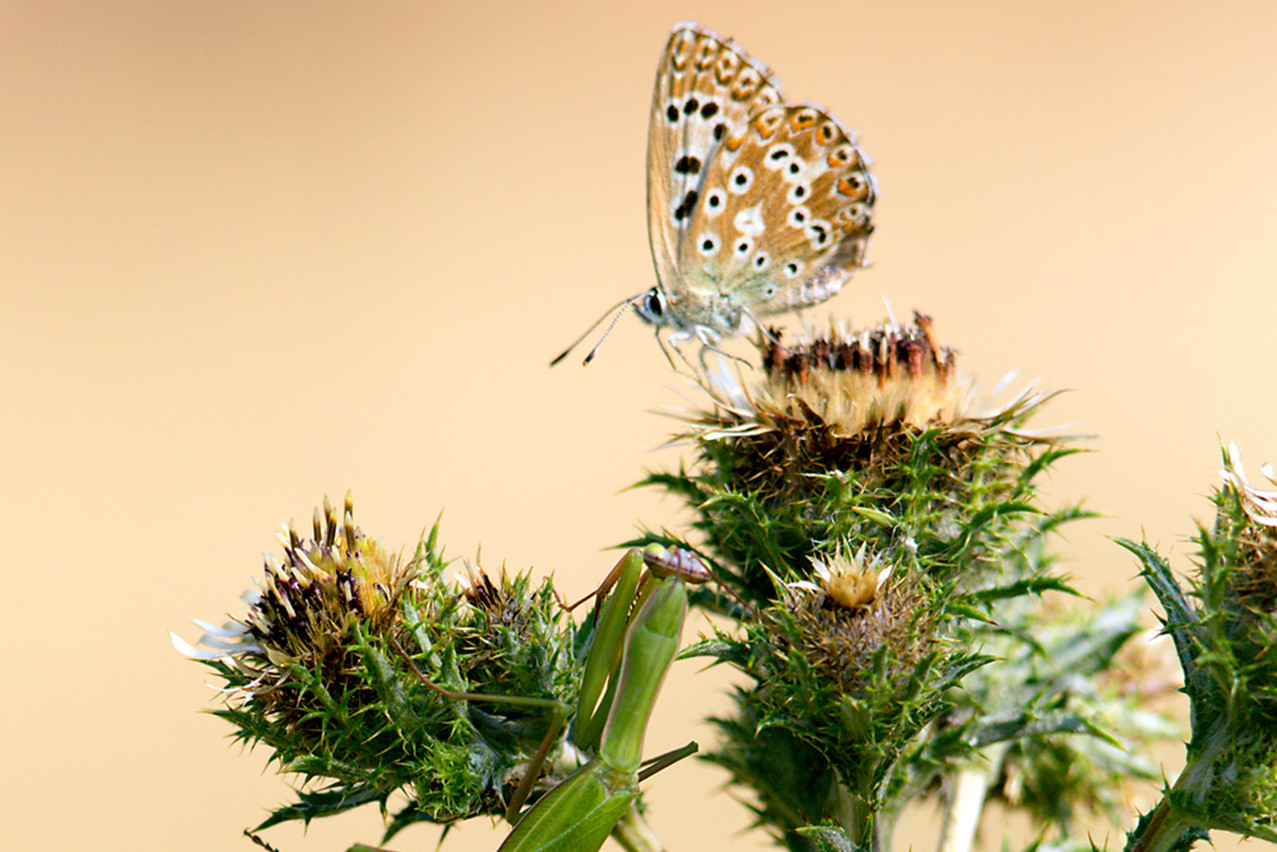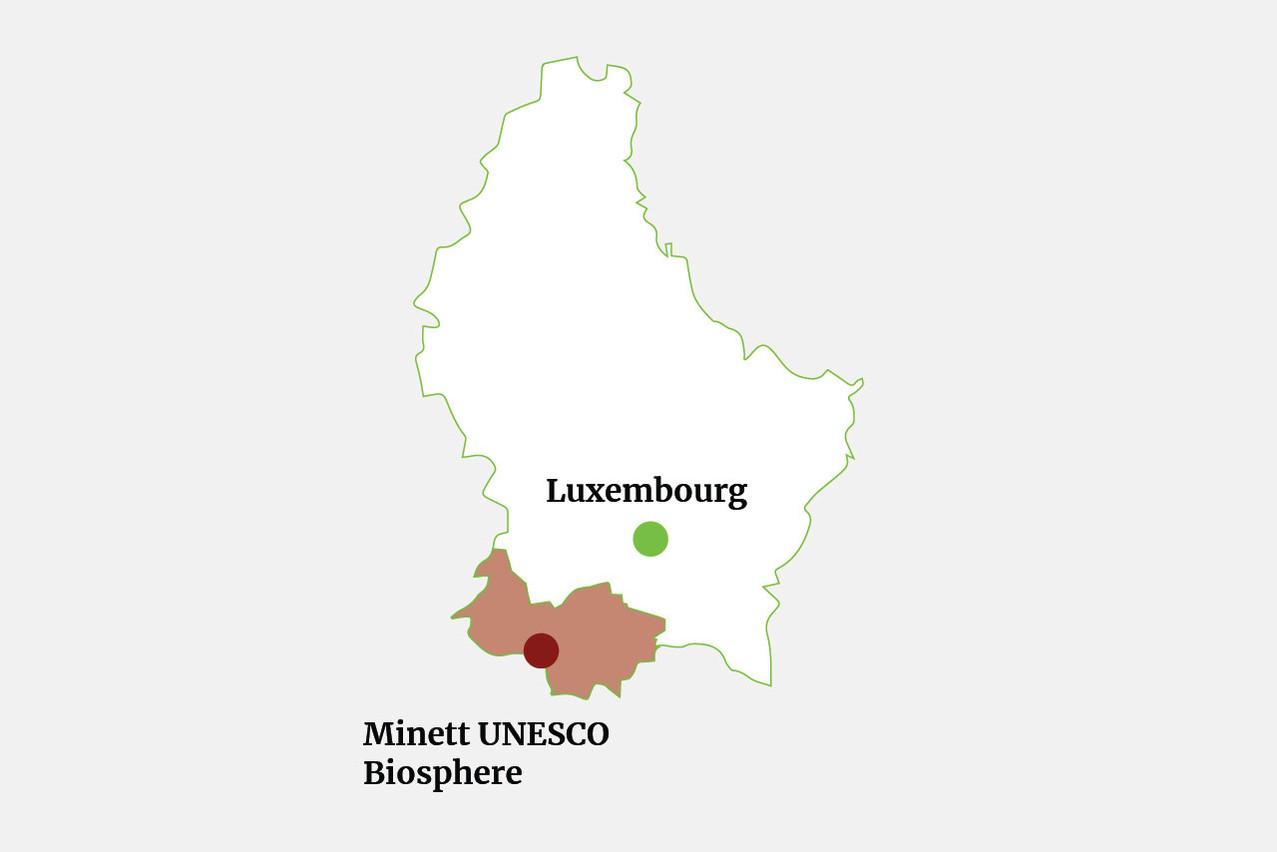In the south of Luxembourg, next to France and Belgium, lies the Minett, an area full of stunning biodiversity and awesome landscapes, a stark contrast to the industrial image to which it has long been associated. On a mission to get the word out is the Minett UNESCO Biosphere. Formed in 2020, the entity promotes the conservation of biodiversity and sustainable development through citizen participation, education, and research. The spring and early summer is one of the best times to participate in the biosphere’s free workshops, part of its scientific programme. Led by experts, these workshops give participants a hands-on, intimate experience with the flora and fauna in the area – and all for free.
A richness of landscapes, plants, and animals
Named for its red soil, rich in iron that once fed an industrial boom, today the name Minett carries other connotations. The mines have long since closed, and the steel mills have all but closed up. The Minett now brings to mind the stretches of red rocks and cuestas that look positively Martian. The 200 square kilometres also contain wetlands, dry grasslands, forests, valleys, what appears to be mini canyons.
Inside these varied landscapes are ecosystems teeming with plant and animal life. If you love wildflowers, you should sign up for one of the Minett UNESCO Biosphere’s workshops in May or June when orchids and other flowers from the region fully present themselves. As for animals, one might come across foxes, boars, lizards, and even amphibians that have taken over the abandoned open cast mines that are now filled with water. If you are attentive and lucky, you might spot an endangered woodlark or hear one sing its melodious lu-lu-lu. Fluttering around the flowers and fields of the Minett is an array of butterflies, a delight for the eyes. For those looking for alien-like creatures to match the otherworldly Martian terrain, keep your eyes open for congregations of praying mantises. And below the ground, in corridors of old mines, bats have now taken up residence, turning the local land that in some parts resembles Emmental cheese into their home.

Polyommatus icarus - Common Azure (Polyommatus icarus) on a thistle. Marc Weis
Free workshops to awaken the scientist and nature lover in you
Gaëlle Tavernier, manager of Pro-Sud which oversees the Minett UNESCO Biosphere, and her team organise a variety of free workshops and nature labs open to the public. These are interactive and offer participants a unique, hands-on experience, the goal of which is to increase citizen participation, transmit knowledge, and help people to reconnect with nature. Workshops are held all year long. Whereas May and June are great months to enjoy plants and flowers, workshops held during the autumn give participants a chance to learn about mushrooms.
May and June are the best time to see rare plants and flowers, including some rare orchids.
The workshops and nature labs are led by some of the top environmental scientists in the country, those who have both passion for the Minett and knowledge of nature in the area. During a workshop, you join their ranks and learn in much the same manner as real scientists do. For example, you might find yourself helping to carry out a vegetation survey. Nature is not limited to areas far from where people live, Ms Tavernier says. In fact, we can find nature even in populated zones, which is why some workshops are organised in or close to urban areas, such as the ones held in Bascharage on 21 May.
In typical Luxembourgish fashion, workshop leaders tend to be linguistically flexible and, in general, are happy to communicate in Luxembourgish, French, German, or English. Workshops are limited to 12 or 15 people so that participants will be able to really benefit from the leaders’ knowledge and experience as much as possible, Ms Tavernier says.

A learning place for sustainable development Maison moderne
The Minett comprises a relatively small portion of the Grand Duchy of Luxembourg, around 7.7 percent of the total surface area. However, it is home to 11 municipalities, one-third of the population of the country, and a diverse mix of nationalities. The Minett began to grow in regional importance in the 19th century with the discovery of pig iron as well as new methods to use it in steel. For decades, the area was an industrial powerhouse, churning out steel and other products. Since the decline of mining and industry in the area that really took effect in the 1990s, it has struggled against the view that it is rough and worn down. At the same time, it has been transforming itself. Today the Minett is home to cutting-edge research institutions including the University of Luxembourg, a growing population, and beautiful landscapes and biodiversity that the Minett UNESCO Biosphere showcases and helps to protect. One-third of the Minett is either natural spots or protected areas, which makes it a very satisfying day trip for anyone in the region.
To register for an awareness-raising workshop, visit

